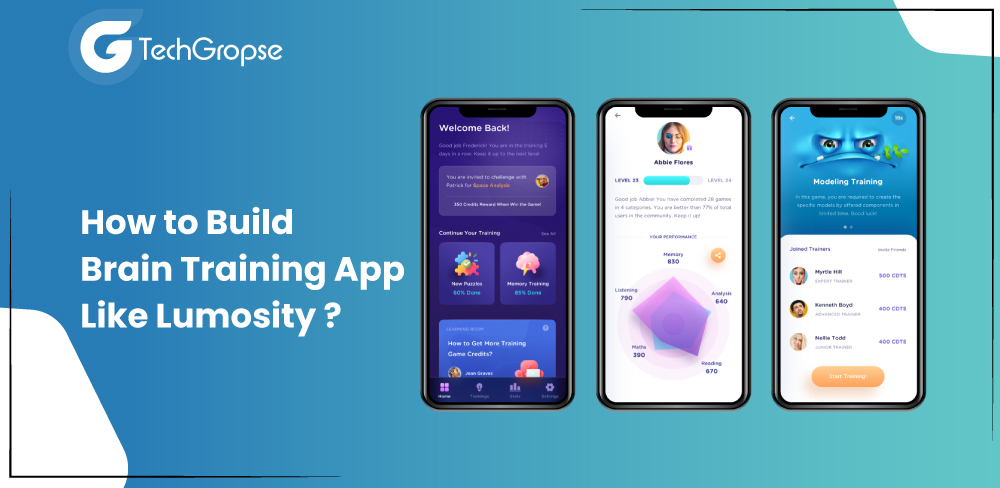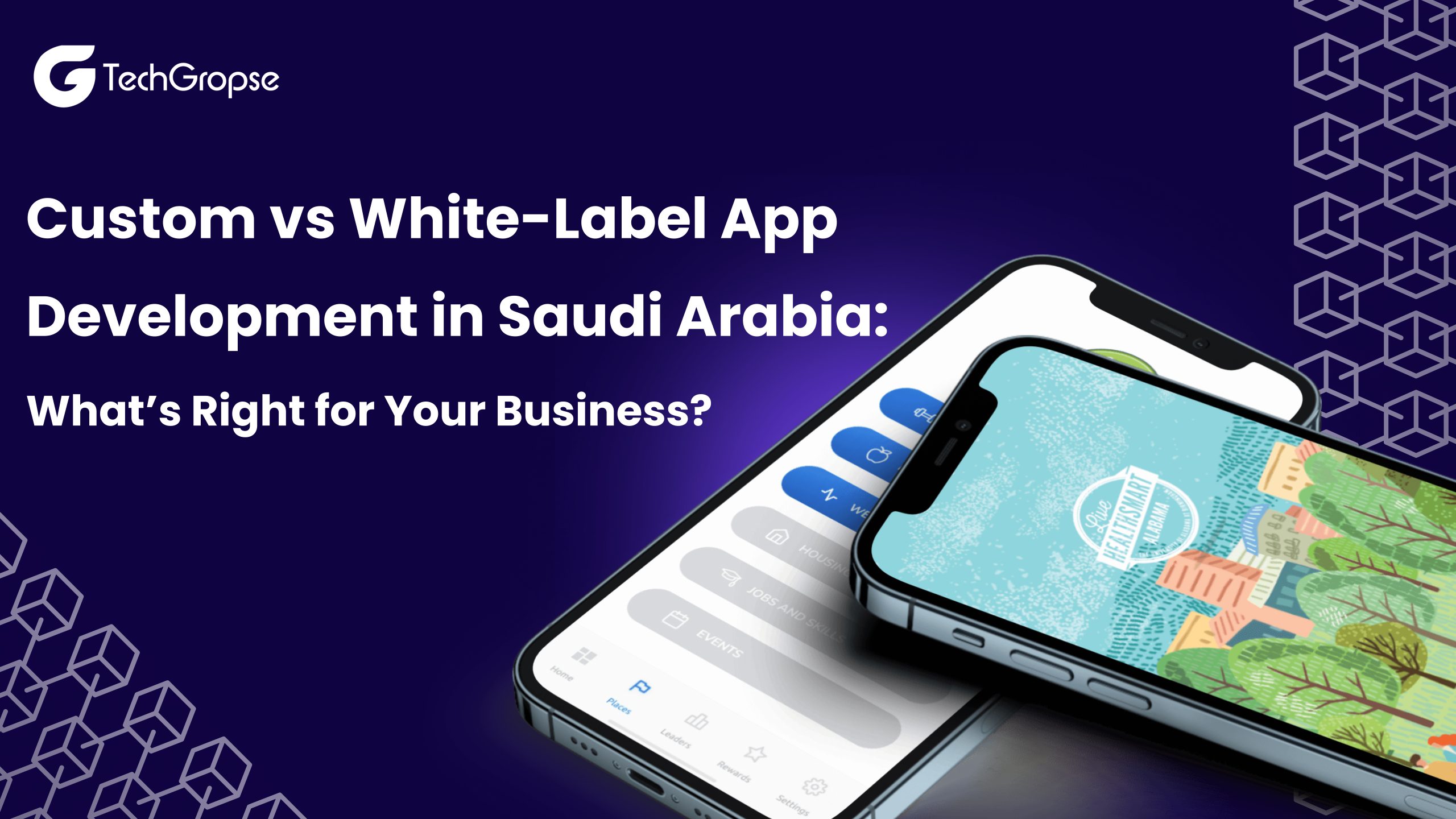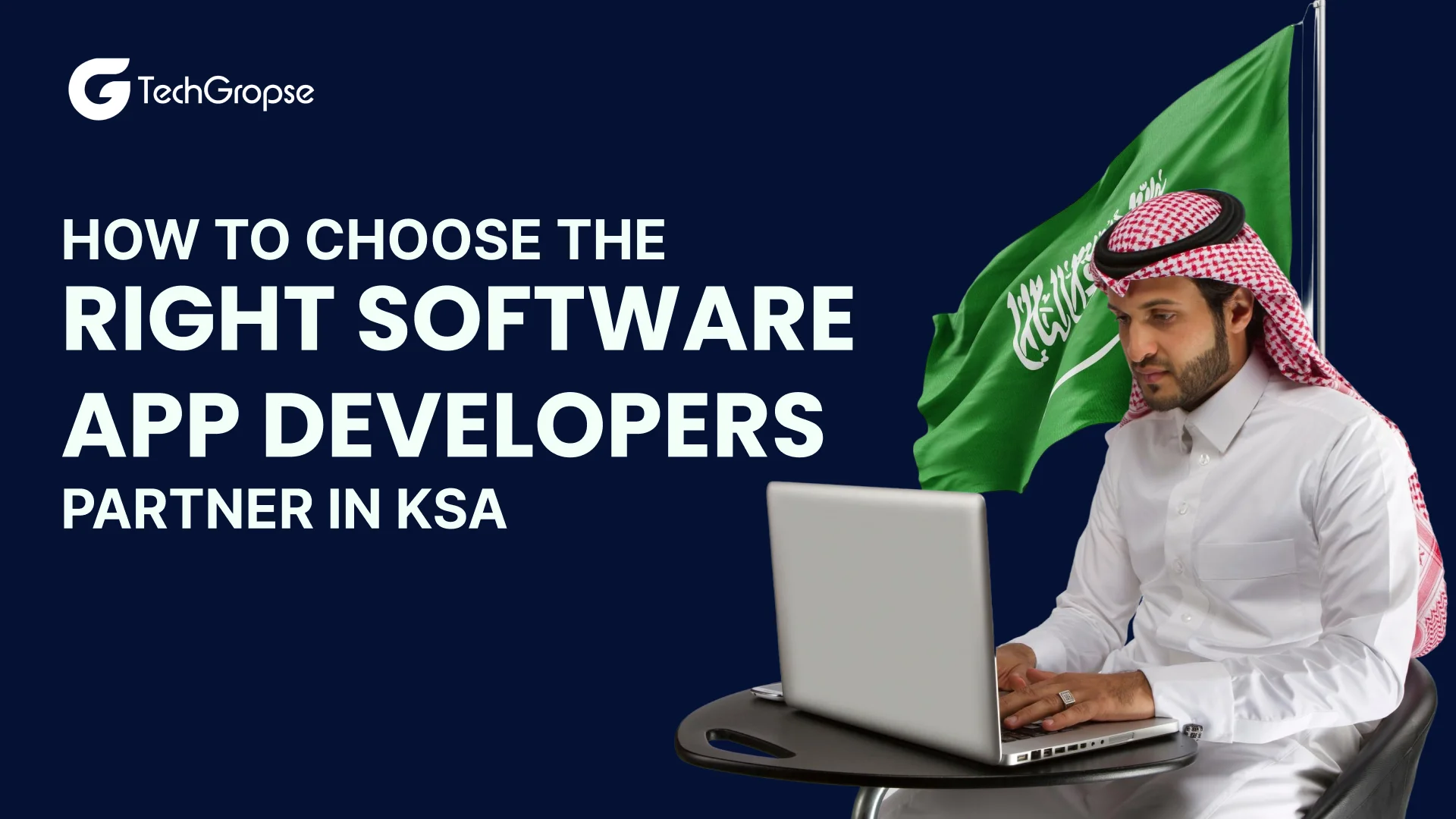“Enhancing Your Mind for a Brighter Future”
Brain training apps have gained significant popularity in recent years as people seek to enhance their cognitive abilities and improve mental acuity. Let’s build brain training app like Lumosity together.
One of the leading and most recognized brain training apps is Lumosity. Lumosity offers a wide range of engaging cognitive exercises designed to stimulate various aspects of the brain, such as memory, attention, problem-solving, and more.
A Brain Training App is a digital platform designed to enhance cognitive abilities and promote mental well-being through a series of engaging exercises and games.
This brain training app development is rooted in the principles of neuroplasticity, the brain’s capacity to adapt and reorganize itself in response to stimuli and experiences.
Users are guided through personalized training programs, often starting with assessments to identify their cognitive strengths and weaknesses. As users progress, app like Lumosity dynamically adjusts the difficulty levels of exercises, ensuring a challenging yet achievable experience.
In 2020, the Brain Training Apps market worldwide was worth a whopping US$ 5,891.2 million. Experts predict that by 2028, it’s going to skyrocket to a mind-blowing US$ 30,511.9 million. That is a huge increase of 23.0% every year between 2021 and 2028.
So, get ready to see more and more brain-training apps popping up everywhere!
What Are Lumosity Brain Training Apps?
Lumosity is a popular brain training app designed to enhance cognitive abilities through engaging and scientifically-based games and exercises.
Developed by Lumos Labs, Inc., the app has gained widespread popularity for its approach to neuroplasticity, the brain’s ability to reorganize and adapt.
Brain Training Apps often incorporate scientific research in cognitive psychology and neuroscience to substantiate their methodologies, providing users with a structured and evidence-based approach to mental fitness.
With user-friendly interfaces, progress tracking, and community features, these apps aim to make brain training an enjoyable and rewarding journey accessible to users of all ages.
Overview of Lumosity and its Success
When it comes to brain training apps, one name that stands out is Lumosity. This popular app has gained a massive following since its launch in 2005.
Lumosity offers a wide range of scientifically designed games and puzzles to boost brain performance. With millions of active users, Lumosity has become a leading player in the world of mental fitness.
Let’s see what numbers say about Lumosity
| Details | Information |
| Base Year | 2019-2020 |
| Market Size in 2020 | US$ 5,891.2 Mn |
| Historical Data for | 2017 to 2018 |
| Forecast Period | 2021 to 2028 |
| Forecast Period CAGR | 23.0% |
| 2028 Value Projection | US$ 30,511.9 Mn |
| Geographies Covered |
|
| Segments Covered |
|
| Companies Covered | CogniFit, Elevate, Peak, Rosetta Stone Ltd., LearningRx, Lumosity, HAPPYneurworldwideherapeutics, Inc., Easybrain, and Happify, Inc. |
| Growth Drivers | Rising adoption of brain training apps for cognitive assessment Increasing cases of mental disorders |
10 Steps You Must Follow to Build Brain Training App Like Lumosity
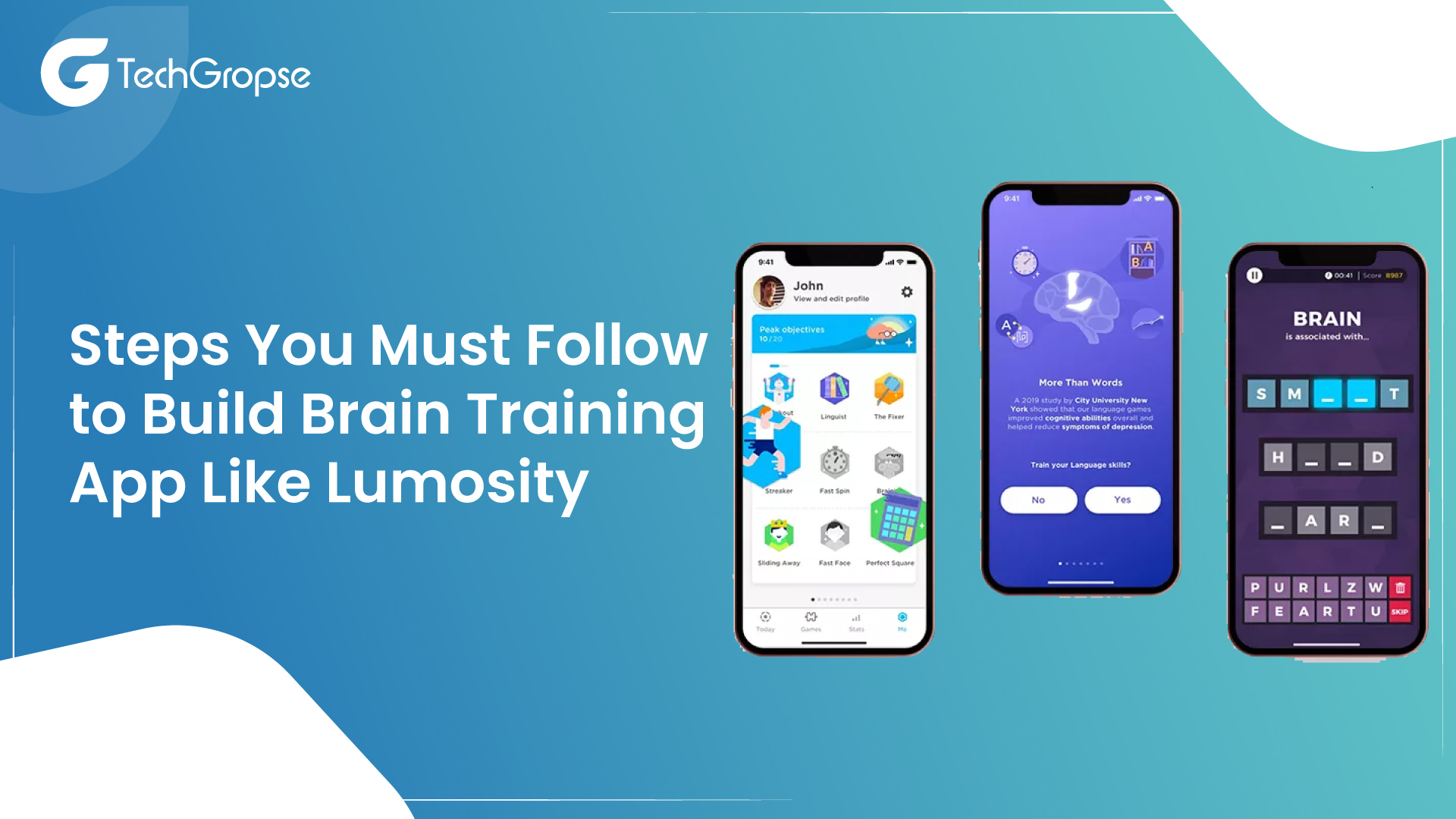
If you want to build brain training app like Lumosity you must consult with a mobile app development company. It requires careful planning, consideration of scientific principles, and a user-centric design.
Here are the key steps you should follow to build brain training app like Lumosity:
1. Market Research and Understanding
Before diving into the ahead, it is crucial to identify your target audience and understand their needs. Different age groups may have different preferences and objectives when it comes to brain training. Hire dedicated developers who conduct market research and gather user feedback to ensure your app caters to the specific demands of your intended users.
You should be aware of
Who your rivals are?
What is their approach?
What else are their advantages?
2. Define App Objectives and Features
Clearly define the objectives to build brain training app like Lumosity. Determine which cognitive skills you want to enhance and establish a list of features accordingly. It may include memory improvement games, attention exercises, language challenges, and more.
| Features of a Brain Training App Like Lumosity | |
| User Registration and Login | Performance Tracking |
| Initial Cognitive Assessment | Leaderboards and Rankings |
| Daily Training Reminders | Achievement Badges |
| Variety of Cognitive Games | User Profile Management |
| Adaptive Difficulty Levels | In-App Notifications |
3. Scientific Foundation and Expert Collaboration
Collaborate with cognitive psychologists and neuroscientists to ensure that your app is built on a sound scientific foundation. Stay updated on the latest research in cognitive training and incorporate evidence-based practices into your app.
4. User Assessment System
On demand app development company implements a robust initial assessment system within the app. This assessment should analyze users’ cognitive strengths and weaknesses to create personalized training plans. Consider using adaptive algorithms to adjust the difficulty of exercises based on individual performance.
5. Game Development and Diversity
Develop a diverse range of engaging games, each targeting specific cognitive skills. Ensure that the games are not only scientifically effective but also enjoyable and challenging. Variety is crucial to keep users engaged and motivated.
6. Personalized Training Plans
Use the data collected from the user assessments to create personalized training plans. These plans should be adaptive, evolving with the user’s progress over time. Provide clear insights into the user’s cognitive development to build brain training app like Lumosity.
7. User-Friendly Interface and Design
Design an intuitive and user-friendly interface that caters to users of all ages. You can hire mobile app developers who focus on creating a visually appealing design that enhances the overall user experience. Ensure that the app is responsive and functions seamlessly across different devices.
8. Progress Tracking and Visualization
Implement a robust progress tracking system, allowing users to monitor their improvements over time. Well, brain training app development company provides visualizations and reports that clearly illustrate their cognitive development. Feedback is crucial to maintain user motivation.
9. Community and Social Features
Integrate community features such as leaderboards, challenges, and forums to foster a sense of community among users. Social elements can add a competitive and collaborative aspect to the brain training experience, enhancing user engagement.
| Community and Social Features for a Brain Training App Like Lumosity | |
| 1. Leaderboards | 6. Collaborative Games |
| 2. Challenges | 7. Event Participation |
| 3. Social Sharing | 8. News Feed |
| 4. Forums or Chat | 9. Community Polls |
| 5. Friends and Followers | 10. Virtual Rewards or Gifts |
10. Security, Testing, and Launch
- Data Security and Privacy: Prioritize user data security and privacy. Implement secure data storage practices and comply with data protection regulations.
- Testing and Quality Assurance: Conduct thorough testing under various conditions to identify and fix any bugs or issues. Ensure that the app performs nicely on various devices.
- Launch and Marketing: When you go with an ideal Android app development company that successfully plans a strategic launch for your app. To build brain training app like Lumosity, develop a marketing campaign using social media, online advertising, and other channels to generate awareness and attract your target audience.
The main elements for optimizing an app on the app store include
| App Store Optimization (ASO) Elements | |
| 1. App Title | 9. Localization |
| 2. Keywords | 10. Frequent Updates |
| 3. App Description | 11. App Compatibility |
| 4. Icon and Screenshots | 12. App Permissions |
| 5. App Preview Video | 13. ASO Tools Utilization |
| 6. App Category and Subcategories | 14. Promotional Activities |
| 7. Ratings and Reviews | 15. App Store Ratings and Certifications |
| 8. App Size and Load Time | |
Must-Have Features To Build Brain Training App Like Lumosity
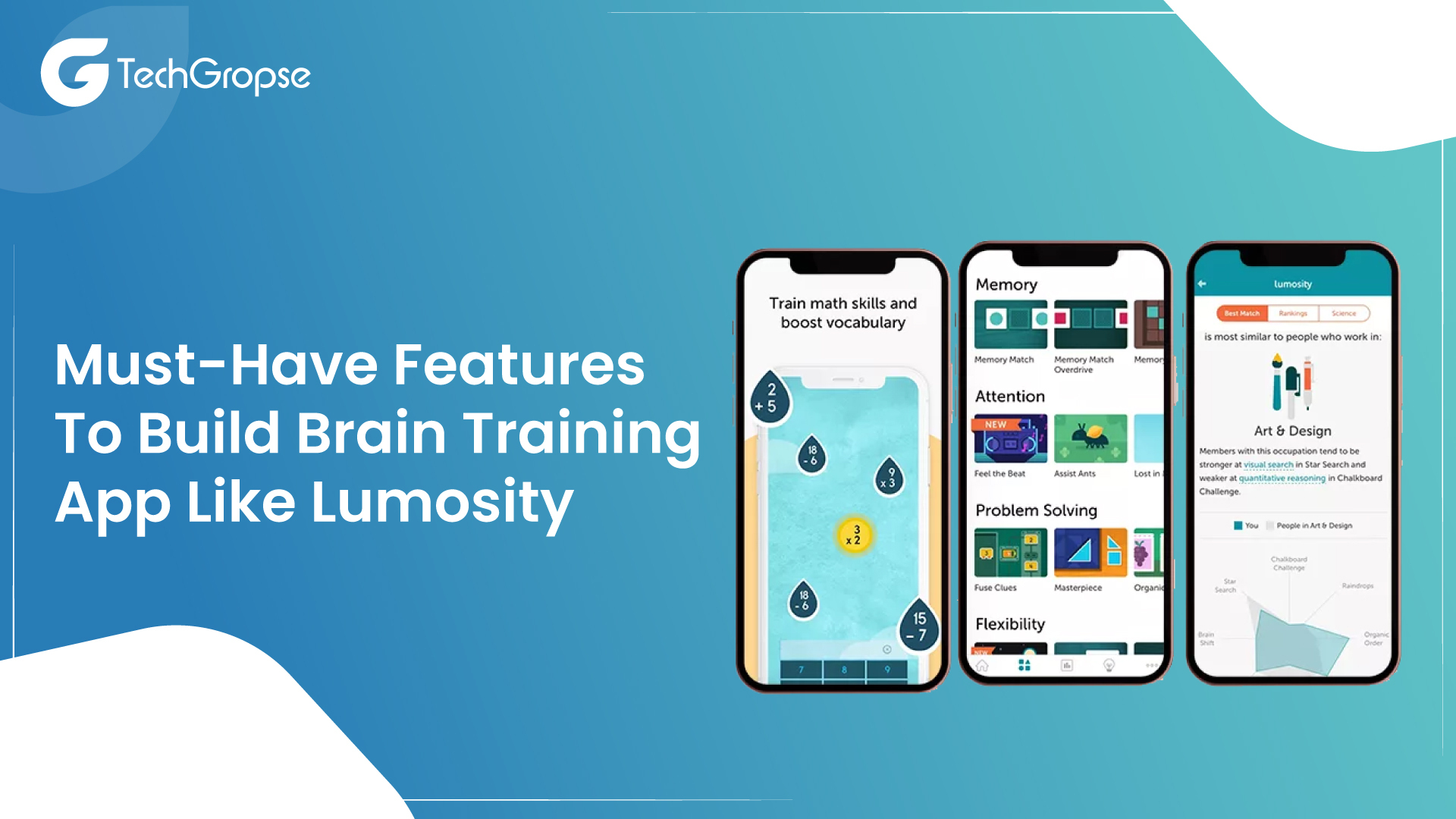
#For User
- User Registration and Login: Users can create accounts and log in, enabling personalized experiences, progress tracking, and access to premium features.
- Initial Cognitive Assessment: A baseline assessment gauges the user’s cognitive strengths and weaknesses, informing the creation of personalized training plans.
- Personalized Training Plans: Tailored programs are designed based on the user’s assessment, adapting over time to individual progress and performance.
- Daily Training Reminders: Users receive notifications prompting them to engage in daily brain training exercises, promoting consistency and habit formation.
- Diverse Range of Cognitive Games: A variety of engaging games targeting different cognitive domains, such as memory, attention, language, and problem-solving.
- Adaptive Difficulty Levels: Game difficulty adjusts dynamically based on user performance, ensuring a challenging yet achievable experience.
- Performance Tracking: Users can monitor their cognitive development over time, with detailed insights into strengths, weaknesses, and areas of improvement.
- Leaderboards and Rankings: Displaying user rankings fosters friendly competition, motivating users to excel and compare their performance with others.
- Achievement Badges: Unlockable badges or rewards recognize users’ milestones, providing a sense of accomplishment and motivation.
- User Profile Management: Users can customize and manage their profiles, track achievements, and update preferences for a personalized experience.
- In-App Notifications: Regular notifications keep users informed about new games, challenges, and community updates, enhancing engagement and user interaction.
#For Admin
- User Management: Admins can oversee user accounts, manage permissions, and address user-related issues.
- Content Management: Control and update the content of cognitive games, exercises, and training plans to ensure relevance and variety.
- Analytics Dashboard: Access comprehensive analytics on user engagement, popular features, and overall app performance for data-driven decision-making.
- Performance Monitoring: Monitor the app’s overall performance, identify bottlenecks, and ensure smooth functionality.
- Feedback and Support: Admins can review user feedback, address support queries, and implement improvements based on user suggestions.
- Security and Compliance: Implement and oversee security measures to protect user data, ensuring compliance with relevant regulations.
- App Updates and Maintenance: Manage and schedule updates to introduce new features, fix bugs, and enhance the overall user experience.
- Community Engagement: Admins can participate in community forums, address concerns, and foster a positive user community.
- Notification Management: Control and schedule in-app notifications to keep users informed about updates, challenges, and events.
- User Reports and Insights: Access detailed reports on user progress, achievements, and engagement to inform strategic decisions.
- Subscription Management: Admins oversee the subscription model, manage pricing, and ensure a seamless premium user experience.
- Collaboration with Expert: Coordinate with cognitive psychologists and experts to ensure the scientific validity and effectiveness of brain training programs.
- Data Analysis and Trends: Analyze user data to identify trends, preferences, and areas for app enhancement.
- Monetization Strategies: Explore and implement effective monetization strategies, such as in-app purchases and premium subscriptions.
Advanced Features of Brain Training App Like Lumosity
Advanced features to build brain training app like Lumosity often involve more sophisticated technologies, personalized approaches, and enhanced user experiences. Here are some advanced features:
- Neurofeedback Integration: Incorporate real-time neurofeedback to provide users with insights into their brain activity during training sessions. This feature can enhance self-awareness and engagement.
- AI-Powered Personalization: Utilize artificial intelligence (AI) algorithms to continuously analyze user performance and dynamically adjust training plans. This ensures a highly personalized and adaptive experience.
- Virtual Reality (VR) Training: Integrate virtual reality technology to create immersive cognitive training experiences. VR can enhance user engagement and simulate complex real-world scenarios for training.
- Biometric Data Integration: Include biometric sensors to collect additional data, such as heart rate variability or eye tracking, providing a more holistic understanding of the user’s cognitive response.
- Multi-Modal Training: Combine various cognitive modalities in a single training session, allowing users to work on multiple cognitive skills simultaneously for a more comprehensive training experience.
- Cross-Device Synchronization: Enable seamless synchronization across multiple devices, allowing users to transition between smartphones, tablets, and desktops while maintaining a consistent training experience.
- Predictive Analysis for Cognitive Health: Implement predictive analytics to assess potential cognitive health risks and proactively recommend personalized training interventions to mitigate those risks.
- Voice Interaction and Commands: Integrate voice recognition technology for hands-free interaction, enabling users to navigate the app, initiate training sessions, or receive feedback using voice commands.
- Augmented Reality (AR) Elements: Introduce AR elements within games or exercises to overlay cognitive challenges onto the user’s real-world environment, adding an extra layer of complexity and engagement.
- Advanced Gamification Techniques: Enhance gamification elements with advanced features such as dynamic storytelling, complex narratives, and interactive game environments for a more immersive experience.
How Does the Lumosity App Work?
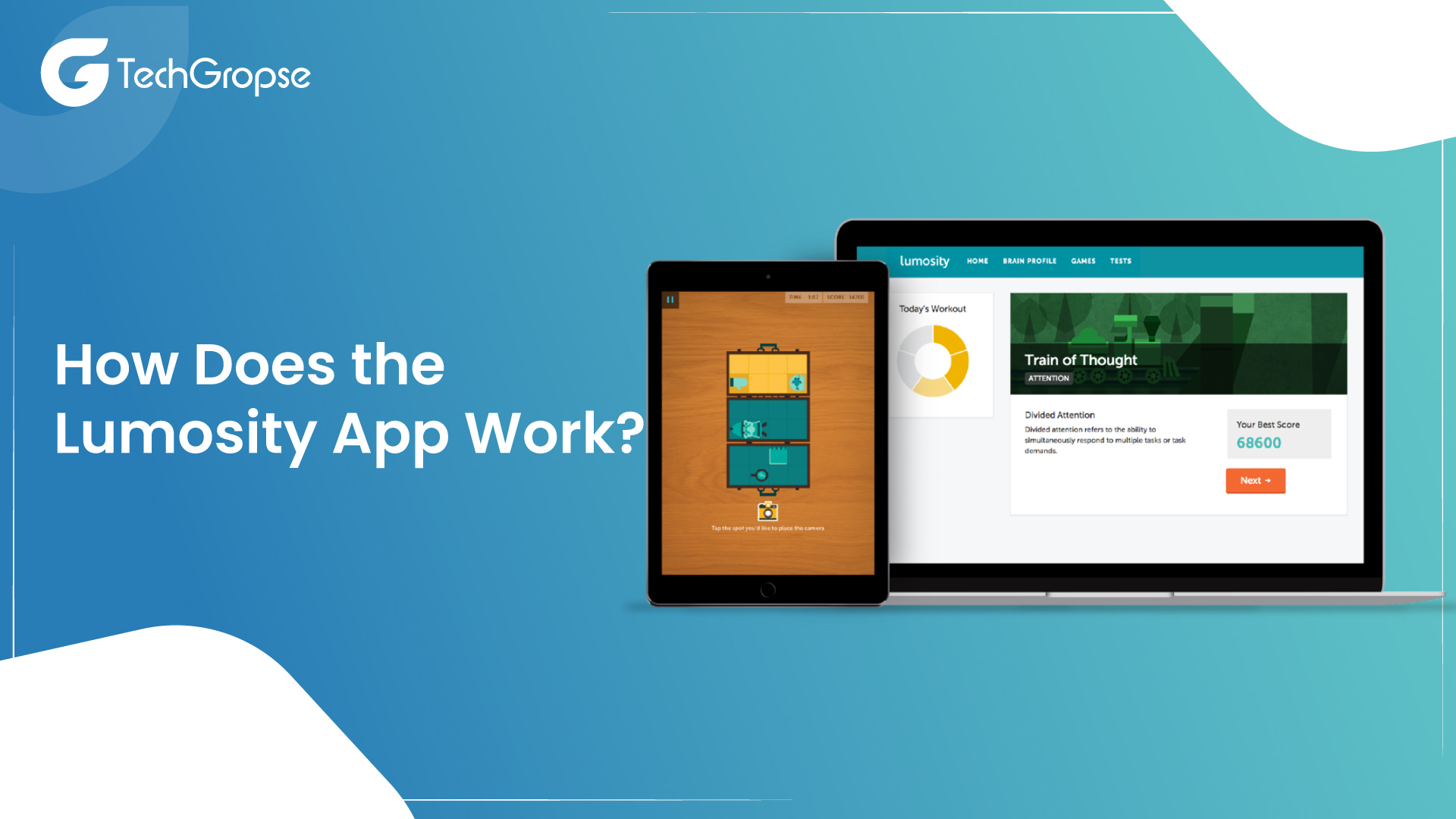
Lumosity works based on the principles of neuroplasticity, the brain’s ability to reorganize and adapt. The app offers a series of cognitive training games and exercises designed to target various mental faculties, including memory, attention, language, and problem-solving.
Here’s a simplified explanation of how Lumosity works if you are trying to build brain training app like Lumosity:
1. Cognitive Games
- Memory Games: Exercises that challenge and improve short-term and long-term memory.
- Attention Games: Activities that enhance focus, concentration, and attention span.
- Problem-Solving Games: Puzzles and games that require logical thinking and problem-solving skills.
- Speed and Processing Games: Tasks designed to improve mental processing speed.
2. Categories of Training
- Memory Training: Targeting different aspects of memory, such as working memory and spatial memory.
- Attention Training: Focusing on improving attention, concentration, and multitasking abilities.
- Problem-Solving Training: Enhancing critical thinking and analytical skills through puzzles and challenges.
- Language and Verbal Skills Training: Games to improve vocabulary, language comprehension, and verbal fluency.
3. Personalized Training Plans
- Assessment Tools: Initial evaluations to determine the user’s strengths and weaknesses.
- Individualized Plans: Tailored training programs based on the assessment results, adapting over time to the user’s progress.
4. Progress Tracking
- Performance Metrics: Monitoring scores and completion times for each game.
- Trend Analysis: Showing improvement or decline in specific cognitive areas over time.
- Achievement Badges or Rewards: Providing positive reinforcement for accomplishments.
5. Daily Challenges and Reminders
- Regular Challenges: Encouraging users to engage with the app daily for consistent brain training.
- Notifications: Reminding users to complete their daily exercises and challenges.
6. Scientific Basis
- Research-Based Approaches: Incorporating principles from cognitive psychology and neuroscience.
- Credible Sources: Citing relevant studies and research to support the effectiveness of the training methods.
How Much Does Brain Training App Development Cost?
| Brain Training App Development Cost | Estimated Range (USD) |
| Market Research and Analysis | $5,000 – $15,000 |
| Conceptualization and Planning | $10,000 – $25,000 |
| Design and User Interface Development | $20,000 – $50,000 |
| App Development (Frontend and Backend) | $50,000 – $150,000 |
| Integration of Advanced Features (AI, VR) | $30,000 – $80,000 |
| Testing and Quality Assurance | $15,000 – $40,000 |
| Security Measures and Compliance | $10,000 – $25,000 |
| App Launch and Marketing | $20,000 – $50,000 |
| Maintenance and Updates (1st year) | $15,000 – $30,000 annually |
| Total Estimated Cost | $175,000 – $465,000 |
Note: The brain training app development cost estimates provided are general ranges and can vary significantly based on factors such as app complexity, features, geographic location of the development team, and the inclusion of advanced technologies.
Additionally, ongoing maintenance costs may vary depending on the level of support required and the frequency of updates to build brain training app like Lumosity.
It’s recommended to consult with development professionals for a more accurate and tailored cost assessment based on specific project requirements.
10 Best Brain Training Apps Like Lumosity
If you plan to build brain training app like Lumosity you should be aware these brain training apps offer diverse exercises and features to enhance various cognitive skills.
Users can choose based on their preferences, goals, and the specific cognitive areas they wish to improve.
| Brain Training Apps | Platform | Features |
| Elevate | Android, iOS | Personalized brain training, focus on reading and writing |
| Peak | Android, iOS | Games targeting memory, attention, language, and more |
| CogniFit | Android, iOS | Cognitive assessments, personalized training programs |
| NeuroNation | Android, iOS | Diverse exercises for memory, logic, language, and more |
| Fit Brains Trainer | Android, iOS | Engaging games for memory, concentration, and problem-solving |
| Brainwell | Android, iOS | Multi-faceted brain training with daily exercises |
| Mind Games | Android, iOS | Wide variety of games to challenge different cognitive skills |
| Lumosity | Android, iOS | Personalized training, adaptive difficulty, and scientific foundation |
| Eidetic | iOS | Focus on memory improvement through spaced repetition |
| EpicWin | Android, iOS | Combines task management with gamified elements for motivation |
Let’s Build Brain Training App Like Lumosity Together
To build brain training app like Lumosity requires a deep understanding of the science behind cognitive training, careful planning and design, and a focus on user engagement and motivation.
By incorporating personalized training plans, effective cognitive exercises, gamification elements, and constantly iterating based on user feedback, you can create a brain training app that not only helps users improve their mental abilities but also provides a fun and rewarding experience.
With the right strategies in place, your brain training app has the potential to make a positive impact on countless individuals seeking to enhance their cognitive skills and lead a more fulfilling life.
FAQ: How to Build Brain Training App Like Lumosity
1. Can I build a brain training app without a background in neuroscience?
While having a background in neuroscience can certainly be advantageous, it is not a prerequisite for building a brain training app. However, it is essential to conduct thorough research on cognitive functions, neuroplasticity, and effective cognitive training techniques to ensure that your app is scientifically grounded and provides meaningful benefits to users.
2. How important is user feedback in the development process?
User feedback is crucial in the development process to build brain training app like Lumosity. By actively seeking and listening to user feedback, you can gain valuable insights into the effectiveness of your exercises, the user experience, and areas for improvement. Incorporating user feedback helps you create a more engaging and user-friendly app that meets the needs and expectations of your target audience.
3. Are there any legal or ethical considerations when building a brain training app?
When it comes to build brain training app like Lumosity, it is important to consider legal and ethical aspects. Ensure that you comply with data protection regulations and handle user data securely. Additionally, be transparent about the benefits and limitations of your app, avoiding misleading claims.






